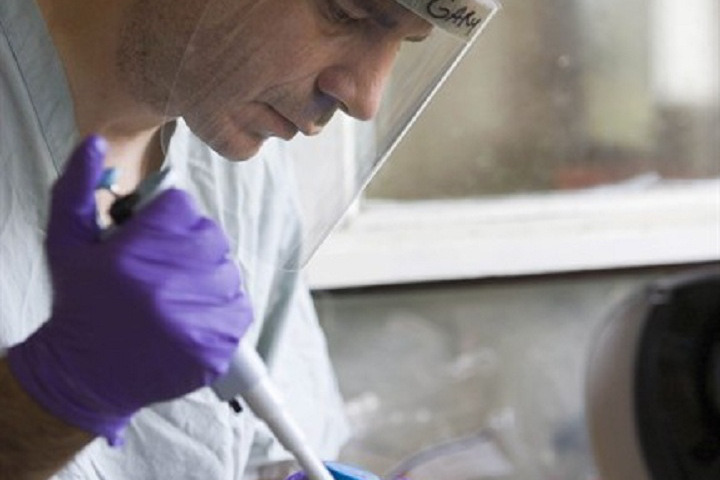Ebola: the virus that scares even scientists
The Independent
When researchers handle Ebola in the laboratory, they adopt the precautions of space walkers. At the Centre for Applied Microbiology Research at Porton Down near Salisbury, there are just four scientists with official clearance to deal with the Ebola virus, and they work in pairs, like astronauts.
”It’s the buddy system,” said Graham Lloyd, head of the Ebola team at Porton Down. ”If anything happens you always have the reassurance of a colleague.”
As the Independent on Sunday reported last month, Dr Lloyd and his colleagues are part of an international surveillance system to monitor the re-emergence of dangerous infectious diseases.
Last week, they were on standby to help the World Health Organisation and the US Centers for Disease Control in Atlanta tackle the current outbreak of the Ebola virus in Zaire.
A mission hospital run by Italian nuns in the Zairean town of Kikwit appears to have been the focus of the outbreak, which began as early as January, according to the World Health Organisation. Since then it has since spread to at least two other towns and possibly the capital, Kinshasa, where four suspected Ebola victims are under surveillance.
The virus causes horrendous damage, as it attacks the internal organs, resulting in extensive bleeding, vomiting, and diarrhoea. It is not, however, particularly infectious, and can only be caught by close contact with infected body fluids.
Scientists believe the present epidemic in Zaire will quickly run its course, provided basic precautions are taken in dealing with the sick. Sterilisation equipment, however, is in short supply in the developing world, where syringes and needles are often reused.
At Porton Down, however, Dr Lloyd’s level 4 laboratory – the highest safety category – is probably the most secure in Britain. When a ”hot agent” is present, only the four scientists with special clearance are allowed through the shower system into the room, where bullet-proof windows protect the outside world from an accidental escape.
Dr Lloyd said that scientists were carefully chosen from the lite who already work on level 3 viruses. The right temperament is essential. ”What you mustn’t have in here is conflict. You must have people who get on,” he said.
Everything entering or leaving the level 4 laboratory, even the air, is strictly controlled. Every six months independent inspectors check all safety equipment, especially the airtight chambers where the virus is handled with thick rubber gloves.
When a level 4 agent is in the chambers, the air inside is kept at a slightly lower pressure, so a leak causes air to be sucked in rather than blown out. Any changes in pressure, for instance resulting from a pinprick in a rubber glove, cause an alarm to sound and a well-rehearsed safety drill to begin.
Dr Lloyd said he was waiting to receive a strain of Ebola recently isolated from a Swiss zoologist, who had caught the disease in the Ivory Coast after dissecting a chimpanzee which had died mysteriously. The Swiss scientist has since recovered.
One of the first tasks when the Ivory Coast virus arrives at Porton Down within the next few weeks will be to try to grow it in a broth of human cells. Once the two scientists have enough of the agent, they will render it inactive, in order to begin the detailed analysis of its structure that will enable them to determine its relationship with the other outbreaks of Ebola.
They hope to shed light on one of the greatest mysteries of the virus – what is its natural ”reservoir”, where it can lie apparently dormant between human outbreaks? Scientists believe the reservoir must be a wild animal, but extensive research has failed to find the culprit.
Monkeys can also be infected with Ebola, both naturally and in research laboratories. In 1989 a strain of the virus emerged at a primate research centre near Washington DC, triggering an emergency. However, none of the scientists who dealt with that outbreak became infected, unlike those in the recent Dustin Hoffman film Outbreak, which is loosely based on the story.
It is unlikely that monkeys are the natural reservoir for the virus, because they, like humans, become too sick for the virus to sustain itself in their bodies over a long period.
In the book The Hot Zone, by American writer Richard Preston, there is speculation that the virus may be lurking in an animal living near Mount Elgon, an extinct volcano on the Uganda-Kenya border. Two Westerners who succumbed to Ebola were thought to have visited a large cave on the mountain that is home to bats, insects and spiders.
Scientists believe Ebola does not pose as wide a risk as Hollywood suggests. It kills people within days of their becoming ill, and, as a result, an epidemic would quickly run its course. HIV, by comparison, can take years to have an effect, during which time an infected person can unwittingly pass the infection on to others.
